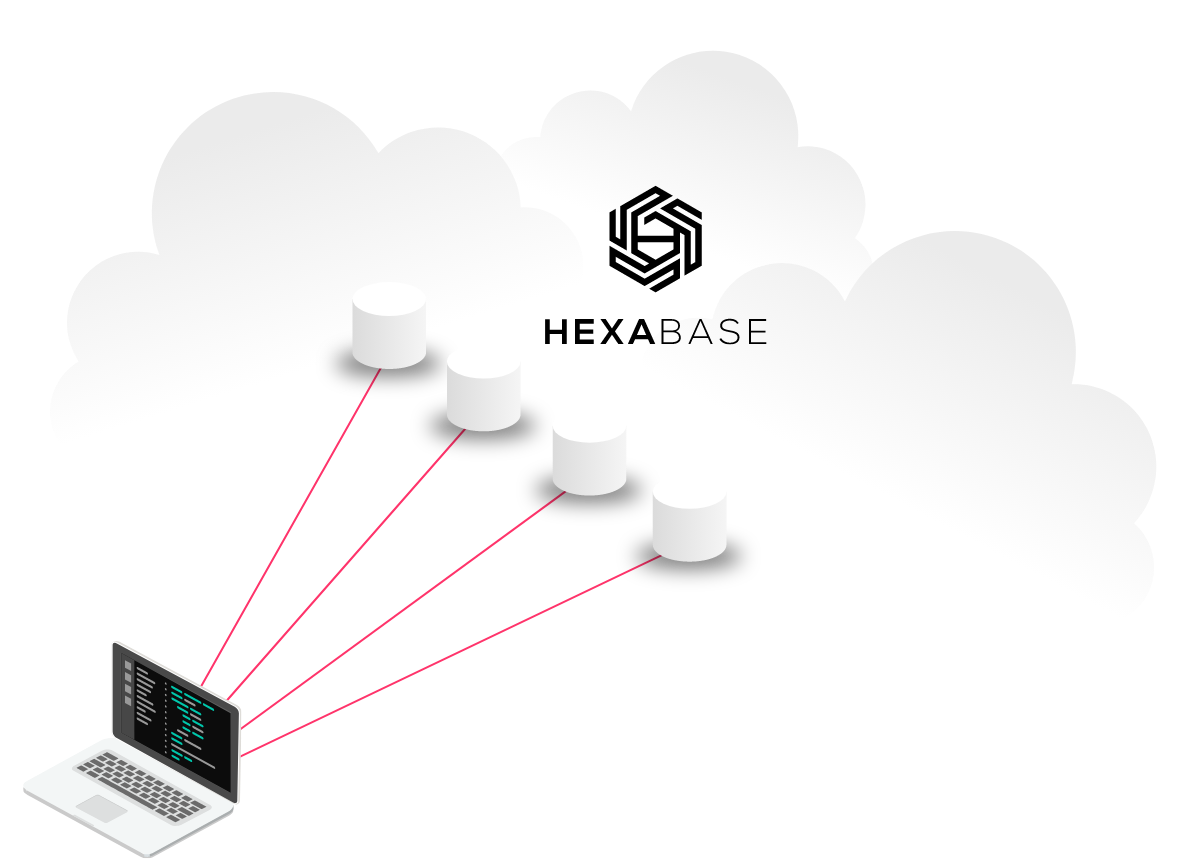DATABASE & API
Integrate multiple NOSQL DBs to RDBMS-like unique data storage
Hexabase integrates multiple NoSQL data bases to provide unique RDBMS-like data storage.
Therefore, it eliminates database bottlenecks while leveraging traditional DB design techniques.
There are document databases, graph databases, in-memory databases, and relational databases, and it is pre-determined which database management system is used for which function.
Application developers do not need to worry about which database management system to use.
Necessary data can be retrieved and updated in JSON format with parent-child relationships via the API. On the front end, it can be manipulated using the Javascript framework’s OR mapping functionality.
And this datastore is running on its own microservices framework on Kubernetes.

Hexabase DB Features
01
Relational Object Database
The relational database design can be used as is.
In a Hexabase data store, business data is stored in a “database”. The “database” can display data in a table-like image, which corresponds to a table in RDB. Although Hexabase is not a relational database (RDB), it allows for unique database associations.
02
High performance
The simple NoSQL-based structure facilitates clustering and high-speed processing.
03
Transaction Security
Data registration and retrieval across multiple tables can also be transaction secured.
04
Row-by-Row Authorization
API return values are automatically filtered according to user, group, and role settings.
Item browsing is controlled by access keys. State can be set in units of database records (i.e., rows), allowing for flexible workflow through state transitions.
05
Workflow
Business processes can be easily developed by combining data status transitions and actions.
06
Change log
Keeps a history of all data changes.
07
Support for GraphQL
System developers can use a generic web service query language to develop efficient and robust systems.